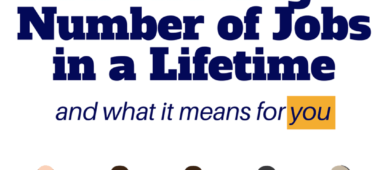“I could get used to this.”
It's a phrase that is repeated no fewer than four times in this thirty second Lexus commercial.
(sadly, the commercial is gone from Youtube but you can see it here)
“Once you experience this level of luxury, there's no going back.” says the narrator.
He's right. There is no going back… and boy, it'll be expensive to stay there.
It's a well documented tendency known as hedonic adaptation.
People have a stable baseline level of happiness and regardless of what happens around you, you tend to settle back into that baseline. When you buy a new car, perhaps even a Lexus, you'll experience short term increases in happiness but eventually settle back to your baseline.
 This might seem like a bad thing, until you realize the same thing happens for negative experiences as well. This adaptation, or desensitization, is a survival mechanism.
This might seem like a bad thing, until you realize the same thing happens for negative experiences as well. This adaptation, or desensitization, is a survival mechanism.
There's just one problem… once you buy that luxury car, you're still paying for it even after your happiness returns to the baseline. To get that happiness back, you need to increase the stakes. The special becomes routine and routine just isn't special, even though the new routine now costs way more than the old routine.
What's the solution? It's not to avoid luxury! — as many experts would say.
The answer is to avoid luxury that is out of reach. Avoid luxury that will tie your finances in knots for many years. If you can't afford to buy a Lexus, reaching (financially) and weighing yourself down with a loan isn't the answer. Your payments will continue long after the pleasurable experiences diminish.
(at its core, this is the Prime Directive of Personal Finance)
The key is to treat yourself but do so in a responsible way.
Perhaps you can't buy a Lexus but could lease one instead. Leasing is seen as a very expensive way to take possession of a car but why not lease an expensive car for two or three years to scratch that itch. When the glow has inevitably worn off, send it back for a more financially practical car. You may miss some of the nice features but you'll just as quickly adapt back to the new baseline… plus you'll have enjoyed driving the luxury vehicle you've always wanted.
Or, get a used Lexus from someone who scratched that itch and wants to move onto something more practical.
“I could get used to this” is a nice phrase… but it's best not to.




Thanks for the article. I never thought of leasing a nice car as a way to “scratch the itch” although it makes sense. One thing I’ve thought about is renting a nice apartment in the city for a short period to “scratch the itch” and just rent out the place I own to someone else to pay the mortgage.
Yeah definitely, once you scratch the itch and it goes away… you walk away. Better than strapping yourself to a financial anchor you won’t enjoy.
What about renting a Porsche for a few days? Isn’t that a less-costly method of scratching the itch? 🙂
In my younger days, I had that luxury car itch but honestly I could see you just return to the baseline. When I got my new to me car, I was so excited because my old one was unreliable and lacked newer features, but ultimately it was just a vehicle to get to somewhere. Didn’t really matter what it was as long as it was practical. Now with a growing family, I’m all about practical. Though as I get closer to middle age, it’s possible I might want to scratch that itch.
There’s nothing wrong with scratching the itch! Just realize that after a while you get used to it… so make sure you aren’t paying for a luxury you no longer love after you’re done loving it. 🙂
We’ve found that we do “get used to it” and it takes even more spending to make us feel the same way in the future. It is a vicious cycle for sure.
Yeah, it’s 100% natural too… Sometimes we spend so much energy and emotion fighting our natural tendencies and behavior. Just embrace it, be smart about it, and sane too.
“A luxury once sampled becomes a necessity.” My husband and I quote this to each other regularly, to avoid hedonic adaption. It’s such a real phenomenon.
That’s a good quote, I’m not sure if it’s a necessity immediately and instantly after sampling but if you enjoy it too much it becomes routine… which is the same message. Good to keep in mind!
Definitely agree. Which is why I choose to live in a low cost of living area and always believed in living frugally and vacationing richly. It does parallel your idea of treating oneself to something that has a happiness lasting as ephemeral as its financial impact/dent on once life.
Awesome succinct post 🙂 Thanks!
I like that term “vacationing richly” — we do the same. I think that when it’s a vacation, your mind is in a different frame of mine so the luxurious don’t become familiar. We do this with our kids too. On vacation, they get a lot of things they don’t get at home, like watching TV and drinking juice. It’s the only way it’s a vacation for us too. 🙂
Hey Jim,
Not to mention the depreciation thats also taking place as soon as you drive of the lot. The mantra needs to be “i could get used to this” but instead be a commercial about wise investments.
Dr. J